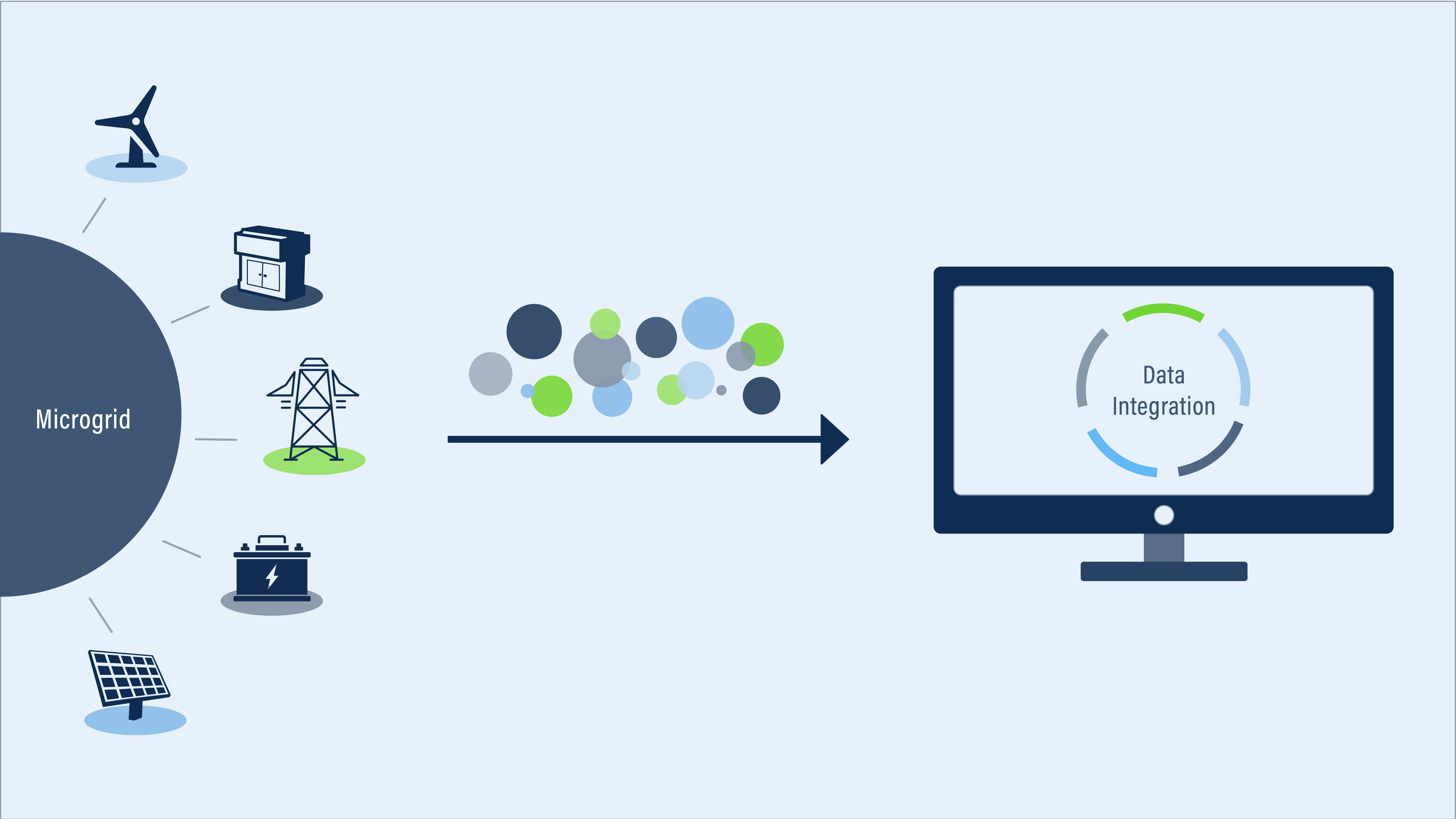Microgrids are an increasingly popular form of energy system, offering benefits such as improved energy resilience and reduced energy costs. However, as technology becomes more complex, effective data management becomes critical for optimizing system performance and achieving these benefits. In this article, we’ll discuss the benefits of data integration for optimizing microgrid performance and the challenges and best practices for implementing it.
Benefits of Data Integration
Improved Visibility and Control
The first benefit of integrating data is improved visibility and control over microgrid operations. By feeding data from the microgrid into internal systems such as SCADA and energy management systems, operators gain a holistic view of the microgrid and can monitor and control system performance more effectively. This can lead to improved energy efficiency and lower costs, as operators can identify areas of the microgrid that are using excessive energy and make adjustments to optimize performance.
Improved Decision-Making
Another benefit of data integration is improved decision-making. By collecting and analyzing data from the microgrid, operators can gain insights into system performance and identify areas for improvement. This can help operators make data-driven decisions, such as adjusting the microgrid’s energy mix or scheduling maintenance activities at optimal times.
Regulatory Compliance
Data integration also supports regulatory compliance. Many microgrid operators are subject to regulations regarding energy usage and emissions, and data integration can help operators track and report on these metrics more effectively. This can help operators avoid fines and other penalties for noncompliance.
Challenges of Data Integration
However, implementing data integration also presents several challenges for optimizing microgrid performance. One key challenge is the complexity of the data itself. Microgrids generate large volumes of data, and operators must be able to manage and analyze this data effectively to gain insights and make decisions. This requires robust data management tools and analytics capabilities.
Integration of Different Data Sources
Another challenge is integrating different data sources. Microgrids often use a variety of different technologies and equipment, and data from these sources may be stored in different formats or use different protocols. Operators must be able to integrate these different data sources effectively to gain a holistic view of microgrid performance.
Data Security and Privacy
Finally, data security and privacy are also important considerations. Microgrid operators must ensure that sensitive data is protected from unauthorized access and that they comply with applicable data privacy regulations. This may require the implementation of additional security measures, such as encryption and access controls.
Best Practices for Integrating Data
To address these challenges, microgrid operators can follow best practices for implementing data integration. These include:
- Define clear objectives: Before implementing data integration, operators should define clear objectives for what they hope to achieve. This can help guide data collection and analysis efforts and ensure that data is used effectively to achieve specific goals.
- Select the right tools: Effective data integration requires the use of robust data management and analytics tools. Operators should carefully evaluate available tools to select those that best meet their needs.
- Standardize data: To ensure the effective integration of different data sources, operators should standardize data formats and protocols where possible. This can help simplify data management and analysis efforts.
- Ensure data security: Data security and privacy is critical when integrating data from a microgrid into internal systems. Operators should implement appropriate security measures, such as encryption and access controls, to protect sensitive data.
- Implement effective data analysis: Effective data integration requires effective data analysis capabilities. Operators should ensure that they have the right tools and expertise in place to analyze microgrid data effectively and gain insights that can inform decision-making.
Conclusion
In conclusion, effective integration of data is critical for optimizing microgrid performance and achieving the benefits that these energy systems can offer. By feeding data into internal systems such as SCADA and energy management systems, operators can gain greater visibility and control over microgrid operations, make data-driven decisions, and ensure compliance with regulatory requirements. However, implementing it also presents several challenges, including the complexity of the data, the variety of different data sources, and data security and privacy concerns. To overcome these challenges, microgrid operators should follow best practices for implementing data integration, including defining clear objectives, selecting the right tools, standardizing data, ensuring data security, and implementing effective data analysis. By following these best practices, microgrid operators can leverage the power of data to achieve optimal performance and drive the continued growth of microgrid technology.












